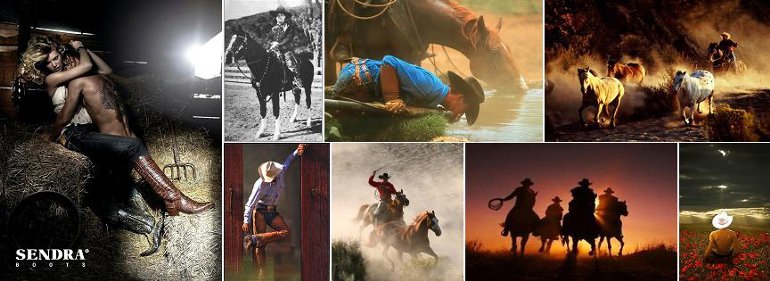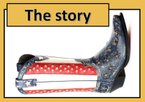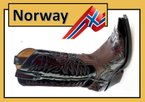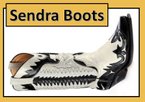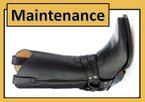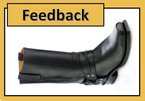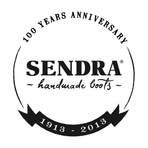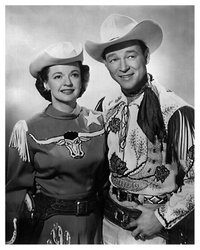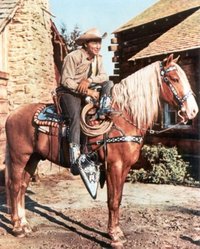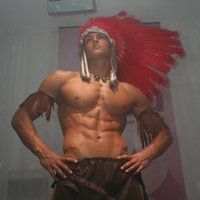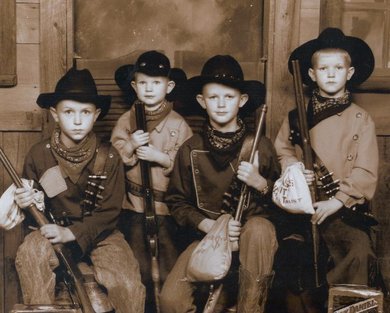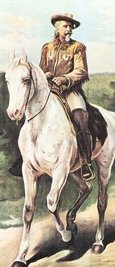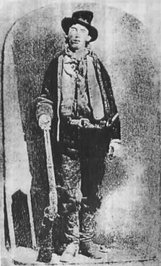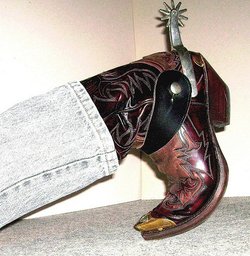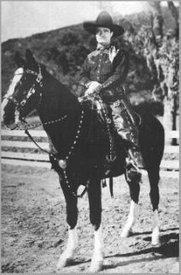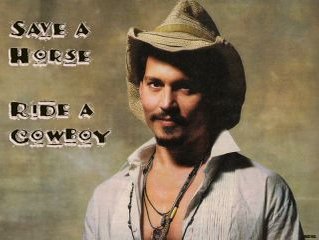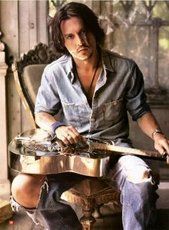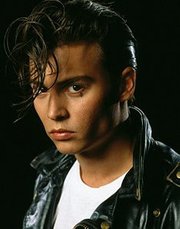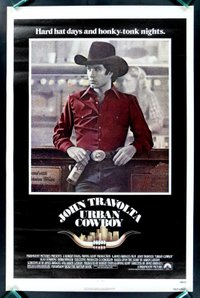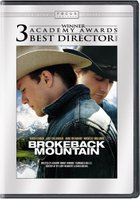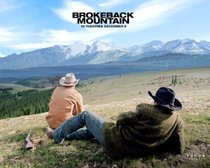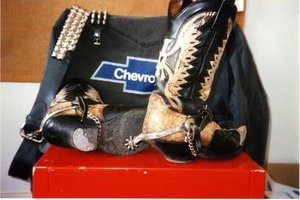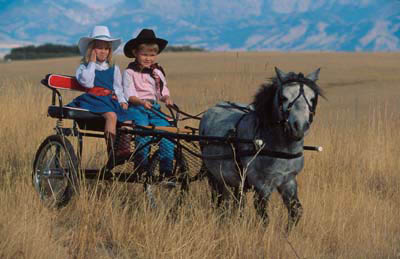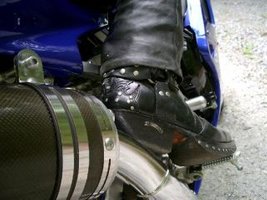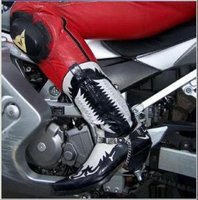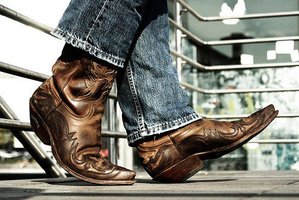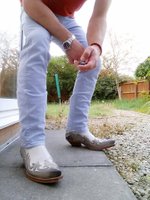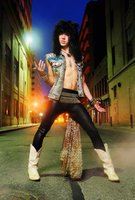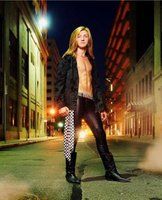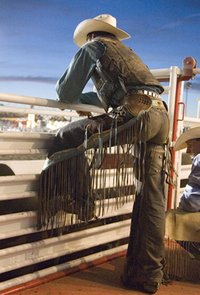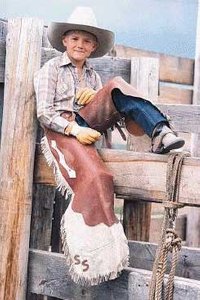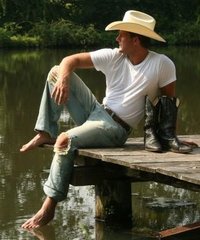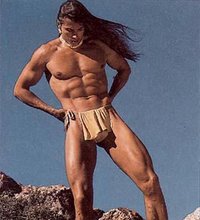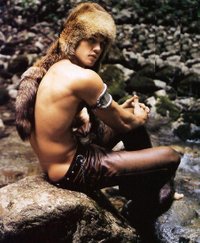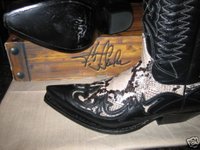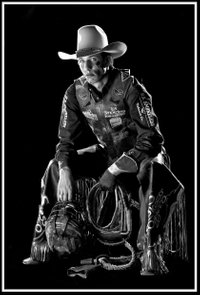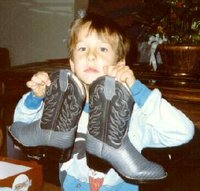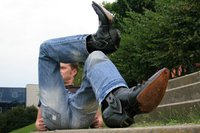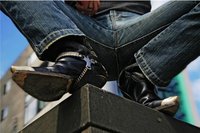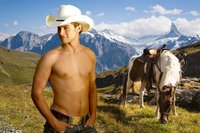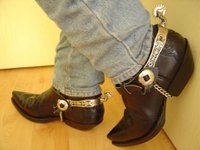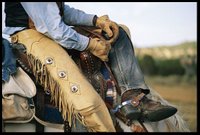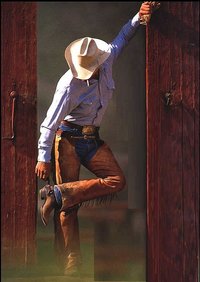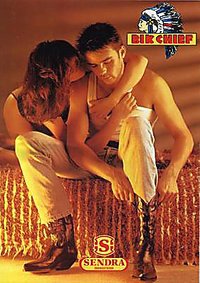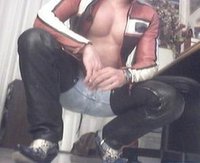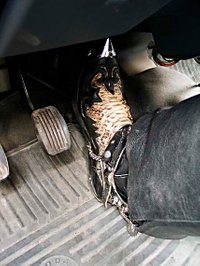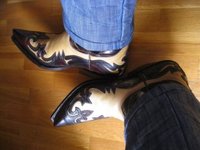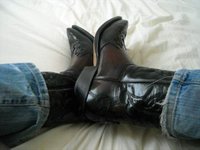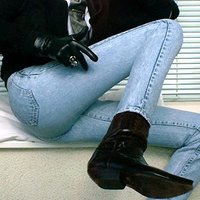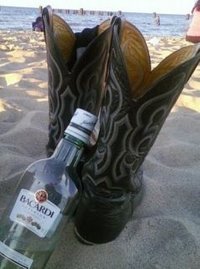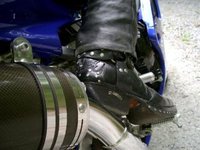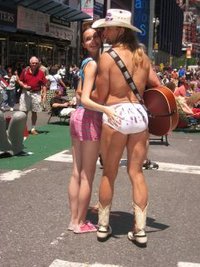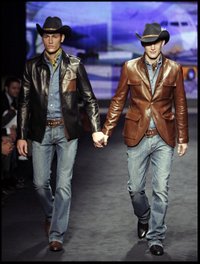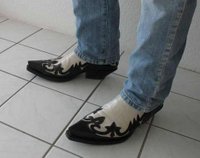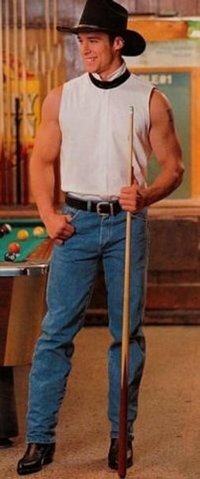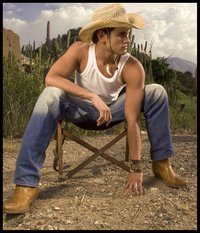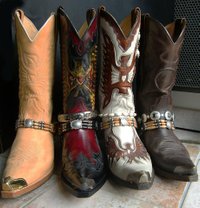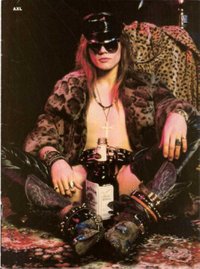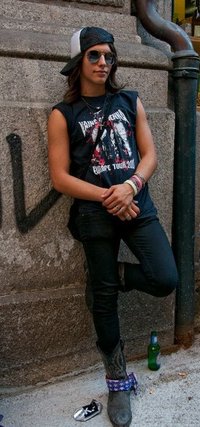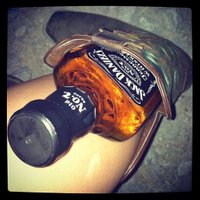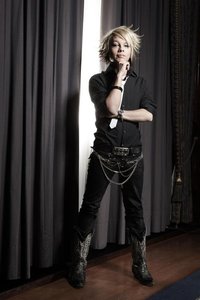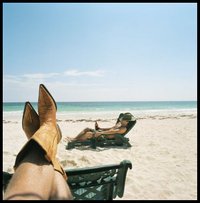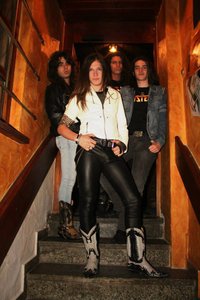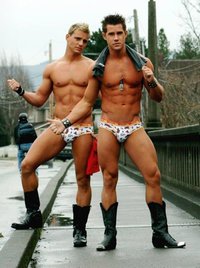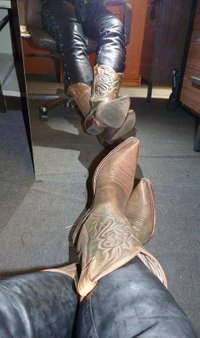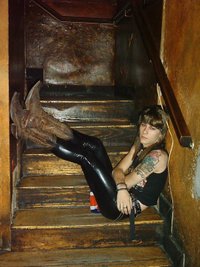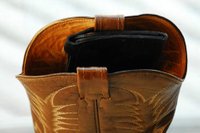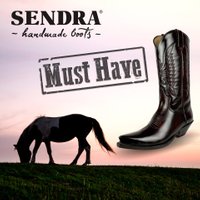Cowboy Boots and their amazing Story - From the very Beginning until Today
Cowboy Boots can be a like a drug or narcotic to the neophyte boots users. Long legged boots, has from the very beginning of high heeled boots, always aroused a certain sensual connotation that verges to the emotional, love and affection. The advantage or benefit of the western or Cowboy Boots is that they’re gender neutral or sexless. Contrary to all other types of shoes, they can be used by anyone – accompanied with whatever – used whenever or wherever – or even used without anything for those who likes it that way.
This usefulness has made the front symbol of America’s legendary, the unfortunately out-dying cowboy, still very much alive. Not only alive, Cowboy Boots are being used daily all over the world. For century’s men (yes it was mostly men) at the horseback, has been dependent of good and suitable footwear, regardless if it has been Attila (500 ac), Morerne (800 ac), Djenghis Kahn (1200 ac), or even the Europeans from the 1700 century. A man, his horse and not at least his boots - has been inseparable in the world history, as legends and even in our own imagination.
This tremendous and great love and affection to the life, lifestyle and soul of the cowboys – very good impressed in everybody’s hearts – is now continuing into the 21 century with an enormous speed. Who hasn’t had a relationship to the legendary cowboy as a child – at least had to be an Indian in the heat of the battle? A game or a relationship the most bring with them into their gown up life – and witch they never ever forget.
The amazing Story of the Cowboy Boots
Companies and persons dealing with High Fashion in 2016 still often chooses Cowboy Boots on the Catwalk. One good example is the Sendra Boots Factory in Almansa (Albacete) Spain supporting major Fashion Houses worldwide when they need a pair of quality boots. They have just celebrated their 100 Anniversary being one of the very best cowboy boots manufacturer ever. Congratulations Sendra!
One thing we can say for sure; the Cowboy Boots has never ever disappeared from the Fashion World or the modern Cat Walks in all these years. They’re more or less in fashion all the time – and now they’re storming into the catwalks all over the world again. Fashion Houses like Prada, Gucci, Dolce & Gabbana, Dsquared2, Ginch Gonch, Marlboro and Diesel are using cowboy boots more than ever. A new millennium yes, but it’s always the very same good old cowboy boots. Yes they’re hotter in Fashion than ever - and if you’re really addicted to cowboy boots …
… one of those who hasn’t forgotten about Cowboy Boots is “little” John F. Kennedy Jr. II declaring: «Nobody or nothing is better-looking than they won’t look even better in a pair of decent and fashionable Cowboy Boots»! … but Norway is always the exception.
The Very Beginning
Let’s look at the story of the world wide famous Cowboy Boots – footwear originally made for tough men with a rough life, where the boots protected them against wind and rain, mud and snow, yes even rattlesnakes, thorns, branches and real rough terrain. Perhaps the question is: How to survive as a cowboy without?
Even if they’re European - today Sendra Boots is one of the best quality brands ever and most popular cowboy and biker boots throughout the entire world.
After years of research, one discovered that there was no first pair of cowboy boots or any place where the cowboy boots was invented or developed. As far back as we do know the history; riders or horsemen all over the world have preferred boots with long legs and some heels. Not anyone could afford having a horse in old days, and this was a sign of upper class, nobility, or even a renowned profession at the horseback, well above the ground. This is why we do have the old saying: Well Heeled, or The Man with the Nice High Heels. In English we even do know the expression Well Heeled, as something solid, of good quality, and well produced.
Herdsmen, the forerunner to the cowboy, existed as early as in 1767 in America. Indians and Mexican horsemen were paid by the French missionaries to herd cattle in California. It might be that the boots and the spurs to the Mexican vaqueros and charros have had an influence or effect on the appearance, as they had a very long experience in preparing leather and leatherworks, but we don’t know for sure. In Texas cattle ranches appeared around 1820, but still the legendary cowboy didn’t settle down until the spring of 1867. This was about the time the transcontinental railway reached Abilene, in the state of Kansas. By the way; this railway is still not finished as we’re writing the story of cowboy boots.
A 29 years old cattle dealer by the name Joe McCoy bought a big part of the areas around Abilene for $ 4250. He advertised for riders who could drift his Longhorn cattle over the open countryside to the temporary ending of the railway in Kansas. The salary was $ 40; witch was 10 times higher than ordinary salary at that time. No wonder “the man in the streets” was looking up to these tough and wealthy young men. At the end of the summer in 1867 there were herds of 3000 animals grassing in the areas around Chisholm Trail. The beefsteak industry was established and McCoy was the very first magnate or baron of beef. If we do have to put a year of birth to the cowboy boots – it would probably be the year of 1867.
During and after the American Civil War the cowboys used shoes or whatever they could get or could afford, yes even uniform shoes or boots. Photos of cattle drifters from this period; shows that it was a very various selection of clothes and shoes. Especially all types of long legged boots. Reappearances are the Wellington boots, a British boot which production started in 1810. It’s named after Arthur Wellsley, who was ennobled as the very first Lord Wellington after defeating Napoleon at Waterloo.
The Wellington’s is usually described as a simple black, sometimes brown boot with seams along the sides, “pull-on-straps” at the top of the boot leg and about 2.5 cm high straight heels. The toe was rounded or square. Usually there was no embroidery. The top of the leg was usually cut straight or was sometimes a little higher in the front. The Wellington boots was generally a working boot with a design influenced by the British invaders.
Wild Bill Hicock in Wellington - Billy the Kid in Hessian boots
At this time a lot of cowboys even used the Hessian boots. This was a lower type ending right under the knee, and with a boot leg formed as a V in front. These boots turned up in England around 1875. They were used by fashion conscious Germans and was supposed to look like the boots to the soldiers from Hesse in Germany. As soldiers from Hesse were fighting in the American Civil War, these boots were actually popular even before the Wellington. Some of the Hessian was decorated with silk or leather bands, hanging down in the front right under the V at the top of the leg. This detail was not especially popular among the cowboys, but on the boots to American college or school music bands we can still even see it today.
About 1870 the shoemaker John Cubine from Coffeyville in Kansas combined the design of Wellington’s and the military style into what’s called the Coffeyville style today. The typical features of this style, was no difference on the left or the right boot. They were made of leather with the rough side out. They were probably black with pull-on-straps. The toe was square or rounded. Sometimes the front part of the shoe was in another colour, like brown or deep red. The front part was bended upwards. Old receipts from shoemakers tells that Coffeyville boots made for Texas, was decorated with a star (Lone Star=Texas) on the front part of the boot leg. There is no reason to doubt in this because all Texas cowboys put the Lone Star on whatever they had. Unfortunately there are no remaining boots from this period of time. Here is a summary from a newspaper in 1860’s describing the Lone Star emblem in the “cattle cities” at this time:
The Lone Star was always shining everywhere for the Texas cowboy. No matter where he goes or whatever he does, he doesn’t use money or strength on people or employers not knowing the emblem or the symbol of his home state. In towns like New Sharon you’ll see the star on the most places. From the big white ones painted on the hotel front, and even down to the very small pink silky ones, embroidered on his hankie.
In the 1860 and 70’s a lot of variations of the Wellington/Military/Coffeyville, together with individual desires, resulted in hundreds of different boots designs. In these years even inspiration from European military and riding boots was a matter to the designs. Yes there was even a lot for variations in heights of the legs and the heels. The toe styles were mostly rounded or square and could be up to 3 inches wide in the front. But still decorations were unusual, and wrinkles or "toe bugs" in front of the toe was totally unknown.
But let’s kill one myth right away: After a thoroughly examination of thousands of old pictures from this time, one has never ever seen any pair of boots with x-pointed toe. We can’t say for sure there never was made any like this, but there is no remaining pairs or even pictures of any. All remaining cowboy boots or even pictures from 1860 up to 1930, has a medium wide or a square toe. In the 1940’s everything should be streamlined and with a smooth shape. Good examples are the cars from that period and even Lyn Gordon. It was first in the 1940’s the toe started with something like x-pointed. The very x-pointed toe didn’t show up until the end of the 1950’s and are now the most characteristic for real cowboy boots. And we’re really grateful, because that’s how most people do like them?
In 1870 there were 121 shoe producers registered in Kansas and 98 in Texas. Most of them produced even ordinary shoes as well. Pictures, advertising, stories, and even diaries from this time tell that several of the producers specialised in cowboy boots, boots for ranch owners and farmers. About 1880 a more characteristic boot was introduced. It was made basically out of four parts and with a “pipe” leg, meaning that both the front and the back of the legs have the very same height. Simple seams of decoration and higher heels also got more and more popular.
Because of the everlasting discussion between Kansas and Texas; where the very first pair of cowboy boots was produced, who’s producing the most, who’s producing the very best – the answer is still: No one! The hypothesis about the cowboys collecting their salaries at the end station of the railway in Kansas, having money to buy decent cowboy boots exactly there, still remains as a hypothesis too. Another hypothesis is; when they came to the nearest city with all its temptations, a new pair of boots was the very last they were thinking about. Just like all others working away from home, they would probably get their shoes and clothes before they left home, and the reason that there are more shoe producers in Kansas that in Texas, would probably be because there are more citizens in Kansas.
Regardless what, the historical facts show; the most influential boots makers in both Texas and Kansas mainly had a German or British origin. The Italian shoemakers like Tony Lama and the Lucchese family didn’t start producing boots until after 1900. The shoemakers in the Mid-West were spread over an enormous area, but still it’s very clear that Charles Hyer by Hyer Brothers in Olathe Kansas and "Big Daddy Joe" Justin by Justin Boots in Spanish Fort Texas were the two most dominant cowboy boots makers in the 1880’s.
The Civil War was over and a brand new and totally different USA appeared. The immigration was massive and new industrial urban areas were growing up and changed the country in more than one way. One of the oldest boot makers, H. Dean Hyer in C. H. Hyer & Sons, established in 1874, described his earlier customers like this: «We do know very well that we sold a lot of boots to people without any connection to the cattle or beef industry at all, the only reason was that they were living in the very same area. In the 1870’s almost everybody could ride a horse, and that’s why US Marshalls, forest workers, gamblers and all others bought a pair of cowboy boots».
Already at the end of the 1880’s people reminisced the bygone days, what they called «The Old West». By the turn of the century the cowboy still existed, a profession that hardly had changed at all since 1860. The cowboy’s life with the cattle herds in the wilderness far, far away from the town streets and the wooden pavements. The cowboys were still out there in the burning sun, splashing rain, snow, mud or whatever the nature had to offer. The cowboy’s best friends were the horse, the saddle, the lasso, the hat, a sparkling and crackling open fire to warm his frozen hands and feet – but most of all - his dear bellowed boots.
The open areas in the Mid-West were built on, and the railway started looking like a spider’s web connecting even the most far away places. The cowboy still had a job to do, but now it was inside big farms or inside areas belonging to the cattle industry companies. Often it was a long way to ride to the nearest city, most likely several hundred kilometres. In the 1880’s Justin and Hyer stared post order shops along the cattle trails; advertising their boots to help out the cowboys with the long distances. Now you could get your boots delivered directly out on the ranches, and you could avoid hard and tiresome riding to the nearest city. Yes now everybody could – see, feel and touch – the very boots they loved and appreciated. They could see all different kinds of boots with their own eyes and they could decide themselves what to buy. In the very first post order catalogues the prices was form $ 3 up to $ 25, but most used $ 12 for a pair of boots. In 1896 the Congress decided by law that there should be free delivery in remote areas. This gave the post order sale an extra lift. This agreement was even improved, strengthened and simplified in 1911.
No other footwear protected the user as good as the long legged cowboy boots. You were staying dry and warm, but they also protected the legs from thorns, branches, sand, stones and even snakes. There were always some changes; if it wasn’t because of the practical use, it was changes in the look or the fashion. You could see the differences at the heels, the toes, and thick or thin soles. The instep could be plain, decorated with another colour, seams called rosette or «bugs». The changes came as a wish from the customer, the boot makers own fantasy, or to improve the comfort or the security. Regardless what, the result was perfect equipment for the foot used in the cowboy manners.
If a cowboy could afford it, he would always buy hand crafted boots exactly fitted to his feet. Last choice was second hand or used boots. It was hard telling what was the most humiliating; wearing boots made for others or the blisters you got wearing other’s boots. Because of this we got something additional to the folklore. We got the «boot lore» or maybe the «foot lore».
One of the very first ways of decorating boots was the wrinkle or the “toe bugs”, a seam across the boots just over the toes. Hyer was perhaps not the very first, but in their catalogue form 1903, this was an option if they should make you a pair. There is no exactly date when they started with the toe decorations, but about 1915 all shoemakers had their own decorations. In addition to the toe decoration, there were also very elegant patterns similar to flowers or a pair of stylised insect wings, individual for every shoemaker. This design still exists at the most of the cowboy’s boots even today, handmade or made in a factory.
After the turn of the century a lot of things happened throughout the world regarding the Cowboy Boots. In 1913 a young man called Andrés Sendra was returning home from America really inspired, and started his own factory producing Cowboy Boots in Spain. He had been living in America for a while trying and using the Cowboy Boots. He had even been living the rough life as a genuine cowboy for some time. His Sendra Cowboy Boots was immediately a big success and he could hardly produce enough for the European market. Because of his enormous success, it’s the fourth generation producing Sendra Cowboy Boots today.
Because of the big success producing western films, the boots got even more popular than ever. In the 1920 and 30’s the legends of the wild west were kept alive through numerous western films and series. Heroes as Tim Mc Coy, William S. Hart, Bronco Billy, Jack Hoxie, Buck Jones, Tom Mix and many, many more – yes heroes that never ever showed themselves without their boots on - no matter what. No one of these tough «hombres» would sacrifice their life – without their boots on. The film heroes were crucial to the all-is-allowed-style from this period, which was more about the appearance of the boots than the function.
These Hollywood idols changed the cowboy boots from being something ordinary and everyday use, into something exotic and exciting. They were the very springboard bringing the boots from ordinary clothing into the world of high fashion and to be used to whatever you would like. A lot even put the trouser into the boots to see the all artistic designs. More than any other film star; Tom Mix had a significant influence on the western style - both in boots and clothes. He was extraordinary good-looking in his high heeled boots decorated with nice spurs. He was like a Johnny Depp Dream Man of his time. When Mix died in an automobile accident October 12 1940, he was wearing his black boots decorated with red, white and blue patterns in silk thread. Tom Mix was a stunt man, film star and a cowboy used to horses. Yes a cowboy written with a big C.
Our parents, grandparents and great-grandparents world of dreams, being realised through the western films and radio, made the cowboy boots extremely popular throughout the entire world – even in Norway. Even nowadays there are cowboy boots remaining in the attic or in the cellar of many homes, bringing memories from that time. They’ve become a significant part of your emotional life and even your heart. You don’t throw away your heart or your emotional life – do you?
During the next 25 years the boots designs got more extensive, intricate and colourful. The most boots was mutual invert duplicates. The outside was inverting equal to the inside. New decorations from flowers, leafs, tulips, roses, insects’ flames, even with stronger colours and colour combinations. It was stitched drawings spider webs, cattle, cactus, flying eagles, horses, horse shoes, oil pumps, playing cards, butterflies, trees or whatever in an endless combination. These quickly replaced the sawn in decorations from the 20’s and 30’s.
After Second World War entertaining was a very important distraction to the American soldiers pretty tired of fighting. The old fashioned Wild West Shows ended, and the old ranches and rodeos were organized as ordinary sport/athletic arenas adapted to the urban audience. This was real show business where the style, colours and even the shoes had to be exaggerated to be noticed by the audience at the stands. Boots with only a simple star, flower or a horse shoe was looked at as old-fashioned and totally out. The phenomenon Rodeo Show with entertainers as Gene Autry, Roy Rogers and Dale Evans, was very in and appealed to most people. This was further increased by Nashville and the Country Music getting very popular at the same time. Cowboys were fashion number one. Everybody used cowboy boots; young or old, rich and poor, in all professions, everywhere and together with everything.
"The Big Five" in America - Justin, Tony Lama, Nocona, Hyer and Acme were producing all what they could manage, and Sendra and Sancho were dealing with the “exploding” market in Europe. Millions and millions of boots were produced in this big Fashion Wave of Cowboys. When looking back; the first golden age of boot was the period from 1940 to 1965, and there was a rapid development in this period. The shoemakers pushed the boundaries all the time with their fantasies and their technical knowledge. Both clothes and boots in western style were used across of income, age, place of residence or whatever. Boots were produced in endless variations of style, colour, and leather types, something that was unthinkable just one generation back in time.
In the 1960’s John Wayne competed against the Beatles to get the young people’s attention. It looked as the western heroes and the western style got a setback for a period of time. But that didn’t scare the Sendra Family. Already in 1958 they had expanded starting producing other kinds of boots and ordinary shoes too. In 1965 they even started dealing with the American market selling Sendra Cowboy Boots. The boots got more conservative, and the only remaining from the extravagant style was the squared and the x-pointed toe. The heels were lower and people didn’t want the strong colours anymore. Everybody thought that the boots industry was “burned” out as a Fashion Classic at the end of the 60’s. Then the 70’s came with the moccasin shoed hippies …
The 1970’s went along quietly without any major changes in the designs. The x-pointed toe was still the most popular. The influence from polyester and leisure clothing made the tanneries experiment with the leather to adjust the boots to the strong and strange colours changing very much in some clothes. But no matter what happened, people still wanted to see Clint Eastwood and western films. And late in the 1970’s, 80’s and even into the 90’s bands, groups, singers and idols of any kind used cowboy boots. Who doesn’t remember Duran Duran, John Bon Jovi, Kiss, Queens, Aerosmith, and all the other groups from that period?
Urban Cowboys
... and later The Retro Boots
In 1980 we got the film Urban Cowboy with John Travolta in the leading part. At the very same time the writer Sandra Kauffmann published her "Cowboy Catalogue book" in USA; a book like a fashion instruction how city persons could make cowboy boots fit to their urban clothing. Once again the boots producers got a big rush, the sales figures went straight upwards all over again, and they got orders for years into the future. Throughout the 80’s there were several book releases in USA about Cowboy boots. Some with a historical aspect and some from a designer’s point of view. This way the cowboy boots was made common to everybody and constantly introduced to new groups of buyers. But as every other cowboy, even the Urban Cowboy disappeared into the sunset with his pastel coloured boots about 1985. The period of pastel colours were definitive ended. The pendulum was about to swing in the opposite direction all over again.
The film "Silverado" and Tom Cruise in "Top Gun", created a new trend: Retro Boots. Now the boots were supposed to look like they were made in the 1890’s all over again. Nature colours with less décor, simple, but still unmistakable western boots. This trend is till modern. It has even developed into what we call the Biker Boots, with harness, squared, and a straight down heel. With exception of the harness, which have no mission at all, the Biker Boots is a lot more authentic to the cowboy’s working shoes from the 1880’s, than the more traditional western boots.
A new Millenium ...
but still the very same Cowboy
In 2005 we even got the film Brokeback Mountain based on E. Annie Proulx story about a forbidden and secretive relationship between two cowboys and their lives over the years. Heath Ledger and Jake Gyllenhall made a tremendous job getting 3 Oscar's, 78 other rewards and 64 nominations worldwide. The film was even nominated to the Norwerian Amanda Reward as the Best Foreing Feature Film.
Similar to the fashion in clothes, even the fashions in boots are characterized by its wide variety going into the new millennium. Everything is tolerated and you can combine whatever you like. In the boots shops you’ll find the very x-pointed with a lot of decorations, side by side the one-coloured “old style” boots. If somebody thought that the cowboy boots fashion was out dying – that’s totally wrong. As a Norwegian not having any cowboy boots in the shoe shops, I’m very pleased and happy to see that there’s a world outside Norway. You don’t need to go further that to Sweden or Denmark to find a lot of nice boots shops. At the bottom of this page you’ll find some links to nice dealers of boots.
Usually most people thinks about America when it comes to cowboy boots, but as we have seen boots has always been popular throughout the world, and even in Europe and Spain they started producing real cowboy boots. The two most well known; Sendra started in 1900 and Sancho in 1900. Today Sendra is in almost every country in the world, even in America being one of the best quality brands ever, and being one of the most popular cowboy and biker boots in the entire world.
What's all the celebrities are doing to us?
They’re touching something in our soul and in our heart. We all do like to be associated with the strong and tough ones – and what is the very trademark to a rough and tough cowboy? Their cool, stylish and fashionable boots! They were a part of their body and you would never ever see a cowboy without his boots on. They just couldn’t live or function without. No matter if they were laying in the bath tub or in the bed with a pretty girl, the boots would always be on. Yes they were some real tough guys these cowboys – all children and young men’s dream. And who doesn’t like to get their dreams fulfilled? Yes to be as tough and good-looking! It’s very strange; but what we do have taken into our heart, always stays in our heart. Once a boots fan – always a boots fan – no matter the age! Yes, people really addicted to Cowboy Boots …
Manufacturing
Because of consisting lot of different parts or components, it’s a very complicated process to make a decent pair of quality boots. Today most of the boots are made in factories with very high quality specifications and control – at least all the well know brands like Sendra, Sancho Buffalo, Tony Mora, etc. They’re made in numerous variations and in all kings of leather. Yes all from cow leather to alligator, emu, kangaroo and cobra - for its very special use and with its peculiar appearance.
To make a pair of decent boots the producer needs to have lots of different sections specialized on its very unique part of the boot. At the section of cutting, the leather is prepared, cut and even split. This material is passed on to the section of fitting, where all pieces finally are gathered. During the process is every pair of boots sent to the fancy digitally controlled seam section where intricate designs and patterns are sewn onto each leg part and upper leather. This is the section where every pair of boots gets its specific character and unique decoration. In the last sections the boots are heeled with its characteristic heels, they get their very last polish and adjustments to look perfect, before they’re shipped out into the big world.
Purchase
The very first to think about when buying a new pair of boots, for what kind of use is this boots - everyday boots, partying, leisure, or only showing off? If it’s only for showing off you might chose some more exotic boots. For what use will help you to decide what kind of leather you should chose. Next step is how much you want to pay. The range of boots and the dealers are enormous through out the world and the easiest way is to order online. Chose a well known producer and a well know web site. As a very good advice: Everybody should have at least two pairs, one for everyday and one for play and showing off.
As mentioned before you’ll easily find yourself a pair of boots, even if you’re the traditional cowboy or the modern and urban cowboy. Yes you’ll find a pair of boot fitting for every type of clothing, even for men’s suits or ladies dresses. The very right pair of boots can be the finishing touch to any outfit, being young or old, in town, at the countryside, or wherever. Boots are not only useful, functional or practical; they’re even an inspiration to many kinds of art. Boots are being used by artists and I paintings, in literature and in poetry. There is no end of options.
In America today you can hardly find any shoe store not having different kinds of boots in their range. You can get exactly the model, style, colour, seam, material you want – everything is possible to find or to order. You can even still get handmade boots, personified especially to you. Boots – is and will always be the biggest symbol on American individualism – in fact the cowboy. The person who never wanted to die without his boots on!
GOOD LUCK WITH YOUR NEW SENDRA BOOTS!
We do hope you’re one of those who proudly want to carry on our parents, grandparents, great grandparents or even great-great grandparent’s inheritance and traditions, to the next generations to come. Remember real cowboy boots is existing - no matter what income, sex or age, for children or grown up, for both sex, for every occasion and to every outfit, and for any taste you might have. If that’s not enough: Users of cowboy boots always gets a more proud and straighten body posture than others. Thanks to its unique heels!
When you’ve bought yourself the very first pair of decent cowboy boots, please do maintain them properly. If you’re buying a well known brand from a recognized dealer, taking good care of them, you’ll have boots for many years to come.
Sources: Sendra Boots, These Boots are made for Walking, Your Cowboy Boots UK, The Cowboy’s Boots by Richard W. Slatta, Cowboys of the Americas, Tyler Beard, Sancho Boots and Herresalongen by Ståle Giverhaug.
